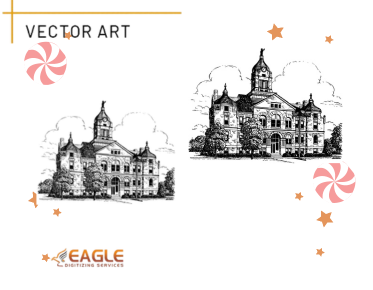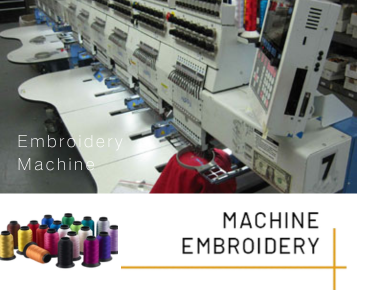Fashion Accessories and Vector Art: A Perfect Match?
Fashion and art have long danced together in a symbiotic relationship, each influencing the other in dynamic ways. Today, vector art is carving out its niche in the world of fashion accessories, merging the precision of digital design with the tactile allure of physical products. This intersection showcases the potential for creativity and innovation, where geometric elegance meets everyday style.
Why Vector Art is Becoming a Popular Choice for Fashion Accessories
Vector art’s rise in popularity within fashion accessories stems from its distinctive benefits. Unlike raster images, vector graphics are resolution-independent, meaning they maintain sharpness and clarity regardless of size. This attribute is particularly valuable in fashion, where intricate designs must translate seamlessly onto various materials. Additionally, the clean lines and versatile shapes of vector art can lend a modern, sophisticated edge to accessories, making them a favorite among designers seeking to infuse their creations with unique, customizable patterns.
Types of Fashion Accessories Suitable for Vector Art
Jewelry: Vector Art’s Role in Modern Designs
In the realm of jewelry, vector art offers an opportunity to craft designs that are both intricate and precise. The precision of vector graphics enables the creation of elaborate patterns and fine details that can be translated into stunning jewelry pieces. From laser-cut pendants to engraved rings, vector art allows for the production of bespoke designs that stand out in a crowded market. The ability to scale designs without loss of quality ensures that every piece, whether a delicate charm or a bold statement necklace, retains its intended aesthetic.
Bags and Wallets: Transforming Accessories with Precision
When applied to bags and wallets, vector art transforms these everyday items into functional works of art. The clean, geometric patterns of vector designs can be used to create eye-catching prints and textures that elevate the visual appeal of accessories. For instance, a sleek, minimalist pattern can enhance the sophistication of a leather handbag, while a vibrant geometric print can add a playful touch to a casual tote. The precision of vector art ensures that these designs are not only visually striking but also durable and consistent across various manufacturing processes.
Scarves and Shawls: Adding Artistic Flair
Scarves and shawls offer a larger canvas for vector art, allowing for expansive and detailed designs. Vector graphics can be used to create everything from intricate, symmetrical patterns to bold, abstract motifs. This versatility means that scarves and shawls can be tailored to suit different fashion statements, from elegant and understated to vibrant and eclectic. The seamless integration of vector art into fabric designs helps in achieving a high level of color fidelity and design clarity, resulting in accessories that are as stylish as they are unique.
Belts and Buckles: The Impact of Vector Patterns
Belts and buckles are often overlooked in fashion accessory design, but vector art has the potential to redefine their role. With vector graphics, designers can create customized belt buckles that feature detailed engravings or embossed patterns. Similarly, belts can be adorned with vector-designed prints that enhance their visual interest. Whether aiming for a sleek, modern look or a more ornate, decorative style, vector art provides the flexibility to achieve a wide range of effects, adding a distinct touch to these essential accessories.
Creating Vector Art for Fashion Accessories
Best Practices for Creating Fashion-Ready Vector Art
To ensure that vector art is fashion-ready, several best practices should be followed. First, designs should be created with the final product in mind, considering how the art will be applied to different materials and surfaces. It’s essential to work in high resolution and use appropriate color profiles to ensure accurate reproduction. Additionally, simplifying designs can help avoid complications during production, ensuring that intricate patterns translate well onto physical products. Testing designs on sample materials can also provide valuable insights into how they will look in the final accessory.
Working with Designers: Collaboration Tips and Tricks
Collaboration with designers is crucial for translating vector art into successful fashion accessories. Clear communication about design expectations, material choices, and production techniques helps in aligning creative visions. Providing designers with detailed specifications and high-quality files ensures that the final product reflects the intended design. Regular feedback and iterative reviews can help refine the designs and address any issues before production begins, resulting in accessories that meet both aesthetic and functional requirements.
Printing and Production Techniques
How Vector Art is Transferred to Fashion Accessories
The transfer of vector art to fashion accessories involves several key techniques. For print-based accessories, such as scarves or bags, the design is typically printed onto fabric using methods like screen printing or digital printing. Laser engraving and etching are commonly used for jewelry and metal buckles, where the design is directly etched onto the material. Each technique requires careful attention to detail to ensure that the vector art is faithfully reproduced on the final product.
Techniques for Printing on Different Materials
Different materials require specific printing techniques to achieve optimal results. For fabric-based accessories, digital printing offers precise color reproduction and detail, while screen printing is ideal for large quantities with fewer color variations. On metal or plastic, laser engraving provides a clean, permanent mark, while embossing or debossing can create textured designs. Understanding the characteristics of each material helps in selecting the most appropriate printing technique to maintain the integrity of the vector art.
Ensuring Color Accuracy and Design Integrity
Maintaining color accuracy and design integrity is crucial in the production process. Using high-quality color profiles and calibration tools ensures that the colors in the vector art are accurately represented in the final product. It’s also important to conduct proofing and sample testing to verify that the designs translate well onto the chosen materials. Consistent quality control measures throughout production help in achieving the desired outcome and ensuring that each accessory meets the design specifications.
Integrating Vector Art into Your Fashion Line
Steps to Incorporate Vector Art into Your Collection
Incorporating vector art into a fashion collection involves several strategic steps. Start by identifying the accessories that will feature vector designs and selecting appropriate art styles for each item. Develop prototypes and samples to evaluate how the vector art translates into different products. Once the designs are finalized, integrate them into your collection, ensuring consistency across all items. Effective marketing and promotional strategies will help highlight the unique aspects of your vector-enhanced accessories.
Collaborating with Artists and Designers
Collaborating with artists and designers is key to achieving a successful integration of vector art into your fashion line. Choose artists who have experience with vector graphics and understand how to translate their designs into wearable art. Establish clear communication channels and project timelines to facilitate a smooth collaboration process. Regularly review progress and provide feedback to ensure that the final products align with your vision and brand identity.
Marketing Your Vector Art-Enhanced Accessories
Marketing vector art-enhanced accessories require a strategic approach to showcase their unique appeal. Utilize social media, fashion blogs, and influencer partnerships to promote innovative designs. Highlight the benefits of vector art, such as its precision and versatility, in your marketing materials. Creating engaging content that features vector art in real-life settings can also help attract and inspire potential customers.
Maintaining Quality and Consistency
Quality Control Measures in Vector Art Production
Maintaining quality control in vector art production involves implementing rigorous standards and procedures. Conduct thorough inspections at various stages of production to ensure that the designs meet quality expectations. Establish clear guidelines for design specifications and production processes to ensure consistency across all products. Regular training and updates for production staff can also contribute to maintaining high-quality standards.
Consistent Branding Through Vector Art Designs
Consistent branding is achieved through the cohesive use of vector art across your fashion line. Develop a recognizable style or theme that reflects your brand identity and applies it uniformly across all accessories. This consistency helps in building brand recognition and loyalty among customers. Regularly review and update your vector designs to keep them aligned with current trends while maintaining brand integrity.
Handling Design Revisions and Updates
Handling design revisions and updates requires an organized approach. Establish a process for evaluating and implementing changes to vector art based on feedback and market trends. Ensure that revisions are carefully tested and reviewed to maintain design integrity. Communicate updates effectively to production teams and marketing departments to ensure a smooth transition and continued alignment with brand objectives.
Consumer Preferences and Market Trends
What Consumers Look for in Accessory Design
Consumers today seek accessories that offer both style and functionality. Trendy designs, high-quality materials, and unique patterns are key factors in attracting buyers. Vector art’s ability to deliver intricate, customizable designs meets these consumer demands, providing accessories that stand out in a competitive market. Understanding consumer preferences and staying updated on fashion trends helps in creating designs that resonate with your target audience.
How Vector Art Meets Current Fashion Demands
Vector art aligns with current fashion demands by offering precise, scalable designs that cater to diverse tastes. The flexibility of vector graphics allows for the creation of both contemporary and classic patterns, addressing a wide range of fashion preferences. Additionally, the ability to produce consistent and high-quality designs enhances the appeal of fashion accessories, making vector art a valuable asset in meeting modern fashion trends.
Market Analysis: The Popularity of Vector Art in Accessories
Market analysis reveals a growing interest in vector art conversion within the fashion accessories sector. The precision, versatility, and scalability of vector designs contribute to their increasing popularity among designers and consumers alike. By analyzing market trends and consumer feedback, brands can capitalize on this growing trend and incorporate vector art into their collections to meet evolving fashion demands.
Vector art holds immense potential for transforming fashion accessories with its precision and versatility. By leveraging the benefits of vector graphics, designers can create accessories that are not only visually striking but also consistent in quality and detail. The adaptability of vector art allows for endless creative possibilities, making it an invaluable tool in the world of fashion. Whether you’re a seasoned designer or a DIY enthusiast, vector art offers a gateway to creating distinctive, high-quality accessories that resonate with modern fashion sensibilities.


